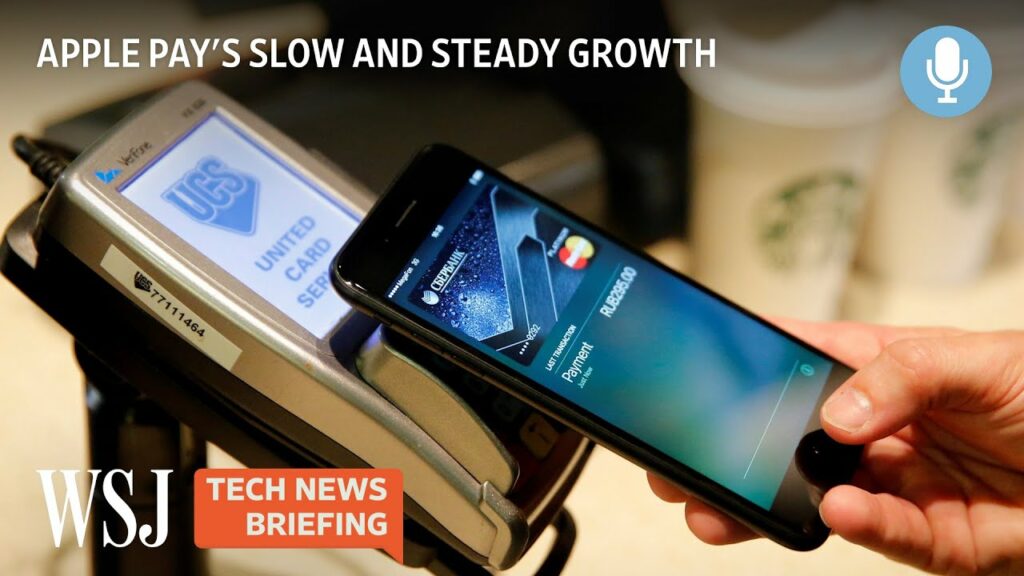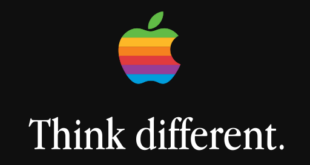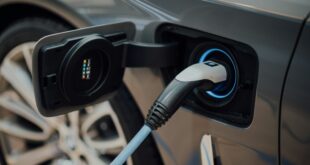Why Apple Pay Removes the Physical Wallet After Only Eight Years – Tech News
Why Apple Pay Removes the Physical Wallet After Only Eight Years – Tech News
When Apple launched Apple Pay in 2014, it didn’t seem like the contactless payment system was much of a hit with customers. Flash forward eight years and the iPhone maker has convinced millions to make their smartphones their wallets.
#ApplePay #Apple #WSJ #tech #mobiles #technews #epicheroes #payments #iphone #mobilephone #visa #mastercard
WSJ “Science of Success” columnist Ben Cohen joins host Zoe Thomas to discuss what Apple’s slow-and-steady approach can teach the rest of the tech world.
Photo: Maxim Zmeyev/Reuters
Apple Pay has been available to iPhone users in the US since 2014, and allows users to make payments using their iPhone. In contrast, wallets are a physical way to store cash and cards. While both methods have their pros and cons, the payment system is generally considered to be more secure than using a wallet.
When it comes to security, Apple Pay wins hands down. With Touch ID or Face ID, only the owner of the iPhone can access their Apple Pay account and make payments. In contrast, wallets can be lost or stolen, and anyone who finds them can access the cash and cards inside.
Another advantage is that it can be used anywhere that accepts contactless payments. This means that you don’t need to carry around a wallet full of cash and cards everywhere you go. All you need is your iPhone.
The Future of Mobile Payments
Apple Pay is a new mobile payment system that allows users to make payments using their iPhone or Apple Watch. This is a big step forward in the world of mobile payments, as it makes it much easier and more convenient for users to pay for goods and services using their mobile devices.
Apple Pay is already accepted by many major retailers and businesses, and it is expected that more and more businesses will start accepting Apple Pay in the near future. This is good news for consumers, as it means that they will be able to use their mobile devices to pay for a wide variety of goods and services.
Apple Pay is a safe and secure way to make payments, and it also offers some great features such as the ability to track your spending, view your transaction history, and even send money to friends and family.
Apple Pay is a mobile payment and digital wallet service by Apple Inc. that lets users make payments in person, in iOS apps, and on the web. It’s easy to use and secure, making it a great choice for customers who are looking for a mobile payment option. With Apple Pay, you can pay with your iPhone or Apple Watch at millions of stores. You can also use Apple Pay to pay for things in apps and on the web. And because your card information is stored on your device and not shared with merchants, it’s more secure than using a credit or debit card.
It was launched in 2014 and is available in over 50 countries. Apple Pay is accepted at millions of stores and can be used for online purchases. It is a secure and convenient way to pay for goods and services. Apple Pay is easy to set up and use. It is also more secure than using a credit or debit card because it uses a unique security code for each transaction.
what is Apple Pay?
Apple Pay is a new way to pay for things using your iPhone. It’s quick, easy, and secure. Here’s everything you need to know about Apple Pay.
The new way to pay for things with your iPhone. To use , you first need to add a credit or debit card to the Wallet app. Then, when you’re ready to pay, just hold your iPhone near the contactless reader with your finger on Touch ID. Your payment will be processed quickly and securely.
Apple Pay is accepted at millions of stores and restaurants around the world. You can also use Apple Pay to make in-app purchases or send money to friends and family using iMessage. Plus, It is more secure than using a credit or debit card because your card number is never stored on your device or shared with merchants.
Apple Pay Technology
Apple Pay employs the EMV Payment Tokenization Specification in its transaction processing.
By replacing the customer’s credit or debit card Funding Primary Account Number (FPAN) with a tokenized Device Primary Account Number (DPAN) and by creating a “dynamic security code generated for each transaction,” the service protects the confidentiality of the customer’s payment information from the view of the retailer.
In a transaction that uses EMV mode, the cryptogram is referred to as the “dynamic security code,” while in a transaction that uses magnetic stripe data emulation mode, the “dynamic card verification value” (dCVV) is used. Apple also stated that they would not be tracking consumption, and that information regarding usage would be kept confidential between customers, vendors, and banks. Through the Find My iPhone service, users also have the ability to remotely terminate services on a misplaced iPhone.
Users can pay for items at points of sale by holding their authenticated Apple smartphone up to the NFC card reader installed in the point of sale system. Apple Watch users verify themselves by double-clicking a button on an unlocked device, in contrast to iPhone users who must either use Touch ID, Face ID, or a passcode to prove their identity.
Apple Pay may be used to make payments in iOS apps as long as the user selects it as their payment option and authenticates using either Touch ID or Face ID. Users have the option of adding payment cards to the service in one of four different ways: by using a payment card that is already associated with their iTunes accounts; by taking a photo of the card; by being provisioned from within the app that is provided by the card issuer; or by entering the card information manually.
Apple Pay is not an instant payment instrument despite the fact that consumers are immediately notified of transactions using the system since the movement of funds between counterparties is not immediate. The duration of the settlement period is determined by the mode of payment that the consumer choose.
With the exception of payments made with a card that stores the user’s balance on the card itself, such as a Japanese Suica card or a Hong Kong Octopus card, this rule does not apply to other types of payments. These cards eliminate the need for a separate online connection by allowing for the immediate transmission of funds to the retailer.
Due to the absence of cardholder identification as a component of the transaction, traditional contactless payments made with bank cards in the United Kingdom are restricted to a maximum amount of £100 (up from the previous limit of £45 until 14 October 2021). Despite this, payments made with Apple Pay can be made for any amount.
This is due to the greater security and reduced chance of fraud that comes with Apple Pay transactions (although some issuing banks may impose their own transaction limits, and not all contactless readers support this functionality – see CDCVM below). Other countries have transaction limits that are comparable to this.
Apple accepts some responsibility for the consequences of dishonest use of the service. It is believed that the financial institutions will be responsible for bearing the cost of the service, and Apple is supposed to have negotiated lower transaction rates. In turn, the banks intended to gain control of transactions that were previously completed without the use of credit.
The Financial Times stated that Apple obtains a cut of 0.15% of purchases made with the service in the United States. However, after the service was launched in the United Kingdom, the Financial Times reported that Apple’s cut is substantially lower in that country. With an effective date of June 8, 2015, Regulation (EU) 2015/751 limits interchange fees in the European Economic Area at 0.3% for personal credit cards and 0.2% for personal debit cards.
This is largely due to the fact that these regulations were passed. In Russia, Apple earns 0.05% of the price of each purchase made with a debit card and 0.12% of the price of each purchase made with a credit card. In addition, the bank pays 45 rubles per year for each card that is added to the service.
Compatibility of equipment
This service is only compatible with devices that have iPhone 6 or later, iPad Air 2 or later, Macs that have Touch ID, and Apple Watch Series 1 or later. It has the capacity to store anywhere from 8 to 16 cards (other types of passes, such as loyalty cards and tickets, do not count against this limit).
Global acceptance
Apple Pay is accepted by around two-thirds of retailers, however not all terminals support it. When consumers go to a different nation, they run the risk of running into acceptance issues. This is because provisioning can vary greatly from country to country (and even between different issuers). The following are some well-known examples:
Only EMV-mode transactions, not traditional magnetic-stripe data-emulation transactions, are supported by Visa cards issued in Canada, the United Kingdom, Saudi Arabia, and possibly other countries not based in the United States. Because some contactless terminals in the United States do not support EMV-mode contactless transactions (even if they support EMV contact transactions), visitors to the United States who attempt to use Apple Pay will receive an error message that reads “Could Not Complete Payment” on the screen of their iPhone as well as an error message displayed on the terminal.
Apple Cash
Apple Cash, formerly known as Apple Pay Cash, is a function that enables users to send and receive monetary payments through the usage of iMessage. When a user is paid, the funds are placed into the recipient’s Apple Cash card, where they are immediately accessible for use at stores and restaurants that accept Apple Pay. Before April 2022, the Apple Cash Card was essentially a Discover Contactless Debit card that had been provisioned for use. The Apple Cash Device Account Numbers are now being issued and renewed on the Visa payment network. This ensures that the Apple Cash card will be accepted at a greater number of retailers.
The user also has the option of requesting an ACH transfer, which would send the sum to a bank account of their choosing. The United States is the only country where Apple Cash can be obtained.
Cost
Users and retailers are not required to pay any additional fees in order to utilise Apple Pay. Participating card issuers in Switzerland, for instance, are responsible for paying for the service. In the year 2020, Swiss banks provided Apple with a fixed commission of 0.275 CHF (US$0.26) per card, which was paid quarterly. In addition, customers were subject to a 0.12% fee for credit card purchases and a 0.17% fee for transactions conducted via web or app. The Swiss antitrust authorities mandate that an acquirer pay the issuer no more than 0.44% of the total transaction amount. This sum is referred to as the “interchange fee” by the Competition Commission. Apple takes anything from 27% to 39% of the total revenue generated by the acquirer from the credit card providers.
How to use Apple Pay
Apple Pay is a convenient way to make secure purchases in stores, apps, and on the web. Here’s how to get started:
1. Add your credit or debit card to Wallet. Open the Wallet app on your iPhone, then tap the plus sign. From here, you can use your camera to enter the card information or type it in manually.
2. Look for the Apple Pay or NFC logo when you’re paying. When you go to pay in a store, look for the Apple Pay logo at checkout. You can also look for an NFC logo if you’re using Apple Pay in a store that doesn’t have an Apple Pay reader yet.
3. Rest your finger on Touch ID or double-click the side button .
Advantages of using Apple Pay
It’s similar to other mobile payment systems like Android Pay and Samsung Pay.
Apple Pay is more secure than using a credit or debit card because it uses an encrypted chip called the Secure Element, as well as Touch ID or Face ID for authentication. This makes it much harder for thieves to steal your information.
Another advantage of using Apple Pay is that it’s more convenient than carrying around cash or cards. You can use Apple Pay to pay for things with just a tap of your iPhone or Apple Watch. And because your card information is stored on your device, you don’t have to worry about losing your wallet or having it stolen.
Disadvantages of using Apple Pay
There are several disadvantages of using Apple Pay. One is that it is not universally accepted. While many stores and businesses accept Apple Pay, there are still some that do not. This can be frustrating for consumers who are trying to use it as their primary form of payment. Another disadvantage is that it can be easy to forget to use Apple Pay when you have it set up on your device. If you don’t use it regularly, you may forget to add it to your payment methods at checkout. Finally, Apple Pay is not available in all countries. This can be a problem for international travelers who rely on their Apple devices to make payments while they are away from home.
Conclusion
In conclusion,Apple Pay is a convenient and secure way to pay for purchases. It is also accepted at a variety of retailers, making it a good choice for those who do not want to carry cash or credit cards. Overall, Apple Pay is a great option for anyone who wants to use their iPhone to pay for items.
It can be used with iPhone, iPad, and Apple Watch. There is no need to carry cash or credit cards, which makes it a great option for users.
Video via Wall Street Journal:
Visit WSJ.com: http://www.wsj.com
Follow us for New Content Daily
Web – www.epicheroes.com
Twitter @epicheroes
Insta @epicheroesuk
http://www.youtube.com/c/Epicheroes
https://amazon.co.uk/shop/epicheroes
 Epic Heroes Entertainment Movies Toys TV Video Games News Art Pop culture news goodness
Epic Heroes Entertainment Movies Toys TV Video Games News Art Pop culture news goodness





